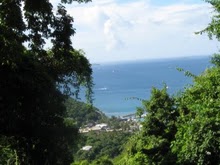 |
| Red Necked Grebe |
I have of course seen Red-necked Grebe at other man made ponds in Edmonton. This year I even saw a mated pair with their off spring. Unfortunately when I saw them, they were too far in the distance for good pictures. The pond where they nested is one I don't frequent very often, so I didn't get another chance this year to take pictures of the little ones, but I certainly plan on revisiting that pond next year around the same time.
 |
| Minnows in the pond |
In the next picture below, you will see that this Grebe has had a very successful hunt. Just look at the size of that fish, it almost looks too large for him to deal with, although he does. It was his unusual behavior that prompted me to take this picture. He was thrashing around and shaking his head from side to side when he caught it. In fact he dropped it once or twice, I think in an effort to better position the fish in his bill for swallowing, but in the end he had to break the fish up in order to eat it.
 |
| Red Necked Grebe with large fish |
 |
| Red Necked Grebe under water |
I have observed that Red-necked Grebes are excellent swimmers and divers who navigate the water with the aid of their lobed feet. In the picture, above, I managed to captured this Grebe coming up from beneath the water, which was kind of neat. However, what is important here is that, because I happened to be above him, I got a first hand view of how they use their feet to propel themselves through, and change direction in the water. I found out through my research that they use their feet, because their tail is simply too short to use for purpose of propulsion.
 |
| Coming up |
I have yet to see this bird in flight, and have never seen in it on shore. That's likely because, like all grebe species, their legs are set too far back beneath them to make comfortable walking on shore, as you can clearly see in the photo above. In fact, they build their nest close to the water's edge, using aquatic plant material. Once their young are hatched they immediately take to the water, although, I have learned, that the Red-necked Grebe
 |
| Red necked grebe shaking water off |
Since my first sighting of the Red-necked Grebe I have discovered that they prefer relatively calm and shallow water. Their habitat is likely to be marsh, fish ponds and fresh water lakes. In the fall they migrate towards the coast and no doubt the marshes there. This particular one disappeared late in August one night.
If you wish to learn more about this very interesting bird just follow the links as usual:
http://en.wikipedia.org/wiki/Red-necked_Grebe
http://www.birdlife.org/datazone/species/index.html?action=SpcHTMDetails.asp&sid=3638
http://www.birdguides.com/species/species.asp?sp=009013
Enjoy,
Susan











No comments:
Post a Comment